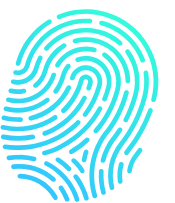Biometric modality: DNA – what is it?

DNA (Deoxyribonucleic acid) is a chemical substance found in each of the approximately 100 trillion cells within the human body. It contains informational, genetic code for replicating the cells and constructing the proteins required to sustain and develop life. The entire DNA in each cell holds the complete set of biological instructions for creating an organism and is known as the genome. DNA found in the nucleus of the cell is divided into two chromosomes (one inherited from the mother and the other from the father) and this DNA material comprises both protein–coding regions and non-coding regions. A protein-coding region is known as a gene and this contains all the information for the cell to make proteins. Genes form less than 5% of the genome which is mostly made up from non-coding DNA.
There are important differences between the uses of DNA and the associated processing protocols for identity management and biometric databases as opposed to other applications such as medical research and genealogy (see use cases). DNA is present in all human cellular material (hair, blood, skin etc.) but biometric sampling is commonly undertaken by obtaining a buccal swab of the inside surface of the face cheek to remove skin cells. Biometric DNA sampling therefore requires contact with the subject.


